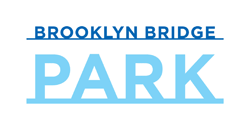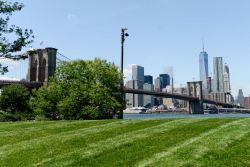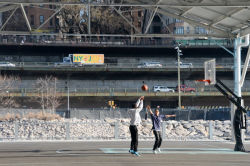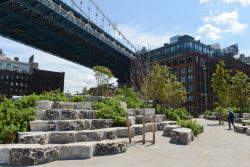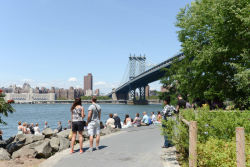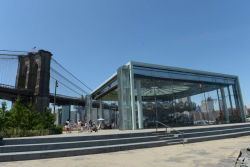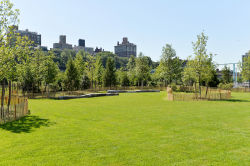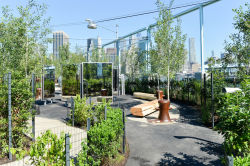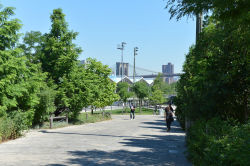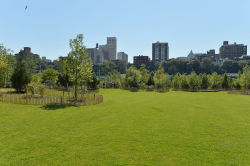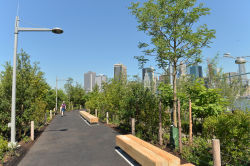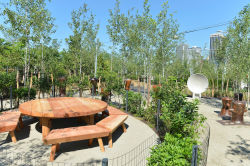Brooklyn Bridge Park
The Daily Plant : Tuesday, January 3, 2006
Bridging Past and Future
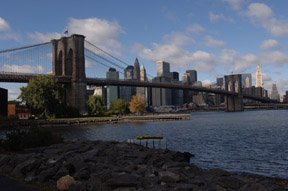
photo by Malcolm Pinckney
On this day in 1870, construction began on one of our City’s most celebrated architectural wonders: the Brooklyn Bridge. Construction took 13 years and $18 million; approximately 27 people died during the process. At the time of its completion, in May of 1883, it was the longest suspension bridge in the world, and the first of four East River crossings to be constructed over four decades. Today, the Brooklyn Bridge remains one of the world’s most loved water crossings, and is one of 10 bridges in New York City designated as historic landmarks.
The Brooklyn Bridge was designed by John Augustus Roebling; after his death in 1869, the project was overseen by his son, Washington. Roebling Sr. intended the bridge "to be ranked as a national monument… a great work of art." Indeed, over the years, everyone from Frank Lloyd Wright to Georgia O’Keefe to Walt Whitman has found inspiration in its enduring beauty.
Though much has changed since 1870, the public’s fascination with this Gothic structure remains. It carries more than 137,000 vehicles over the East River in an average weekday, yet remains one of New York City’s most popular walking sites. It is the oldest standing passenger bridge in the City (the oldest standing bridge is the High Bridge).
The Department of Transportation, which oversees the Brooklyn Bridge, will soon begin several maintenance projects, including a seismic retrofitting that is slated for completion in 2013.
Today, an 85-acre swath of land under the east side of the Brooklyn Bridge hosts one of New York City’s newest and most anticipated waterfront areas: Brooklyn Bridge Park. The first phase of construction was unveiled in December 2004; the second phase, in October 2005. The three-part project stretches across years and is the result of a massive collaboration between the offices of the Governor and Mayor, various City officials, the State and City parks departments, and numerous community groups.
The newest section of the park, bordered by the East River and Adams and Plymouth Streets, includes a newly accessible beach area and waterfront esplanade. New trees, shrubs, perennial beds, and expanses of groundcover form a natural landscape. Bluestone sidewalk pavement and an ornamental perimeter steel fence extend along Plymouth and around Adams Streets. A Manhattan Bridge-inspired gateway and new water supply, drinking fountains, irrigation system, and lighting were also added.
QUOTATION FOR THE DAY
"Not all who wander are lost."
J.R.R. Tolkien
(1892-1973)
Check out your park's Vital Signs
Clean & Safe
Green & Resilient
Empowered & Engaged Users
Share your feedback or learn more about how this park is part of a
Vital Park System

